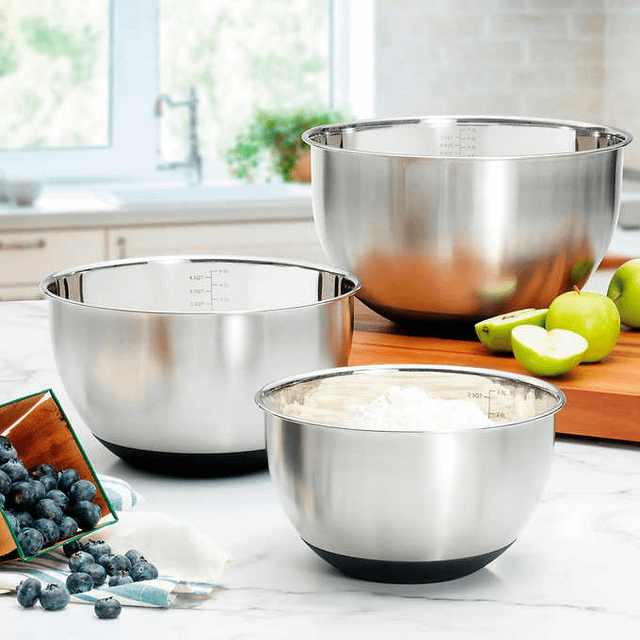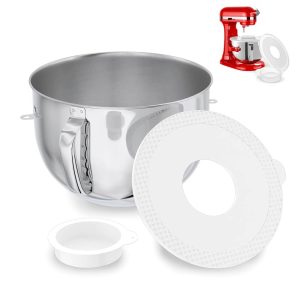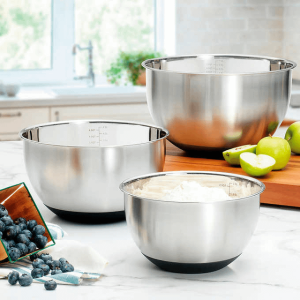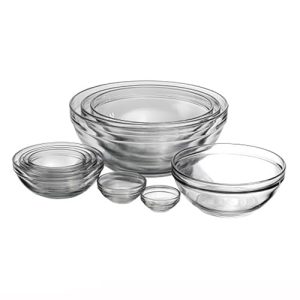When you’re in the kitchen, choosing the right mixing bowl can make a big difference in how your recipes turn out. You might be wondering, are glass mixing bowls better than stainless steel?
This question isn’t just about looks—it affects how your ingredients blend, how easy cleanup is, and even how safe your food stays. If you want to know which bowl truly fits your cooking style and kitchen needs, keep reading. By the end, you’ll feel confident picking the perfect bowl for your next culinary creation.
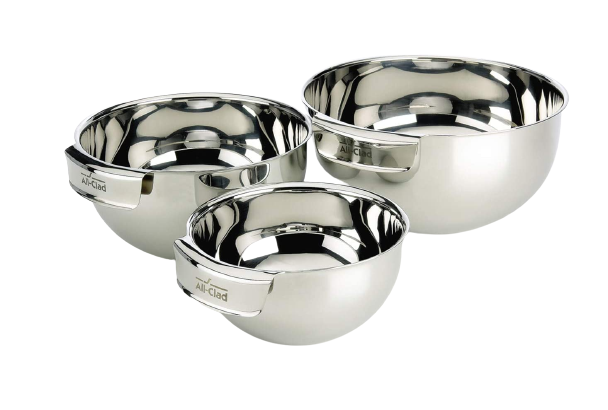
Credit: medium.com
Benefits Of Glass Bowls
Glass mixing bowls are a popular choice in many kitchens. They offer several benefits over other materials. This article looks at why glass bowls can be better than stainless steel ones.
Knowing the advantages helps you pick the right bowl for cooking and baking. Glass bowls have qualities that suit many tasks well.
Non-reactive Surface
Glass does not react with acidic or alkaline foods. This means it does not change the taste or color of your ingredients. Stainless steel can sometimes react with certain foods, causing a metallic taste.
Microwave And Oven Safe
Glass bowls are safe to use in microwaves and ovens. They can handle heat well without warping or melting. Stainless steel bowls cannot be used in microwaves and may not always be oven safe.
- Can be used to heat food in a microwave
- Safe for baking in the oven
- Handle temperature changes without damage
Transparency For Easy Monitoring
Glass bowls are clear, so you can see the contents at any time. This helps you check mixing progress and detect lumps or unmixed parts. Stainless steel bowls do not offer this benefit.
| Feature | Glass Bowl | Stainless Steel Bowl |
| Non-reactive Surface | Yes | Sometimes no |
| Microwave Safe | Yes | No |
| Oven Safe | Yes | Depends on type |
| Transparency | Yes | No |
Advantages Of Stainless Steel Bowls
Stainless steel bowls are popular in kitchens for many reasons. They offer strong and lasting use.
These bowls work well for many tasks. They are easy to carry and keep clean.
Durability And Longevity
Stainless steel bowls resist dents and cracks. They do not break like glass bowls.
These bowls last a long time with daily use. They stay strong after many washes.
Lightweight And Portable
- Easy to carry to picnics or camping
- Less heavy than glass bowls
- Simple to store in kitchen cabinets
Stainless steel bowls are a good choice for moving food around. They do not add much weight.
Resistance To Stains And Odors
| Feature | Stainless Steel Bowls | Glass Bowls |
|---|---|---|
| Stain Resistance | High | Moderate |
| Odor Retention | Low | Can absorb smells |
| Cleaning Ease | Easy | Requires careful washing |
Stainless steel does not keep stains or smells. It cleans quickly and stays fresh.
Performance In Food Preparation
Mixing bowls are essential in every kitchen. They come in different materials, including glass and stainless steel. Each has its benefits when preparing food.
Choosing the right bowl can affect your cooking results. Let’s explore how glass and stainless steel bowls perform.
Mixing And Whisking
Glass bowls are heavier. They stay in place when you mix. This stability helps when whisking ingredients quickly.
Stainless steel bowls are lighter. They are easier to handle and move around. This is helpful for quick tasks and mixing smaller batches.
- Glass: Stable for fast whisking
- Steel: Easy to handle and move
Temperature Control
Glass bowls maintain temperature well. They are useful for chilling ingredients. This helps with tasks like making salad dressings.
Stainless steel bowls heat up and cool down quickly. They work well for mixing hot ingredients. Bakers often use them for melting chocolate.
- Glass: Good for chilling
- Steel: Quick temperature changes
Impact On Ingredients
Glass bowls do not react with acidic ingredients. They are perfect for mixing fruits and salads. This keeps flavors pure and fresh.
Stainless steel can sometimes affect the taste of acidic foods. It’s best for mixing doughs and batters where this is not a concern.
- Glass: Non-reactive with acids
- Steel: Best for doughs and batters

Credit: www.rorence.com
Cleaning And Maintenance
Choosing the right mixing bowl affects how easy it is to clean and maintain. Glass and stainless steel bowls have different needs. Understanding these helps keep your kitchen tools in good shape.
This section compares cleaning and care for glass mixing bowls and stainless steel ones. It covers ease of cleaning, dishwasher use, and resistance to stains and scratches.
Ease Of Cleaning
Glass bowls have a smooth surface that does not hold food particles tightly. This makes them easier to clean by hand. Stainless steel bowls sometimes need more scrubbing because food can stick to the surface.
- Glass bowls usually need less effort to wash.
- Stainless steel bowls may require stronger scrubbing.
- Both materials can be cleaned with mild dish soap.
Dishwasher Compatibility
Both glass and stainless steel bowls are generally safe for dishwashers. Glass bowls can sometimes develop cloudiness after many washes. Stainless steel holds up well but might show water spots.
| Material | Dishwasher Safety | Notes |
| Glass | Yes | May become cloudy over time |
| Stainless Steel | Yes | Can show water spots, but durable |
Stain And Scratch Resistance
Glass bowls resist stains well because they are non-porous. They are less likely to keep colors or odors. Stainless steel bowls do not stain easily but can show scratches from metal utensils.
Here are common traits for each:
- Glass:Resists stains, can chip or crack if dropped.
- Stainless Steel:Scratch-resistant but can show marks; does not chip.
Safety Considerations
Choosing the right mixing bowl affects safety in the kitchen. Glass and stainless steel bowls each have different safety features to consider.
This section looks at breakage risks, chemical safety, and heat properties of both bowl types.
Breakage And Injury Risks
Glass bowls can break if dropped or hit hard. This may cause cuts or injuries. Stainless steel bowls do not break but can dent or scratch.
- Glass bowls may shatter, causing sharp pieces.
- Stainless steel bowls are more durable and dent-resistant.
- Broken glass needs careful cleanup to avoid injuries.
- Stainless steel bowls stay intact under rough use.
Chemical Concerns
Some worry about chemicals leaching from bowls into food. Glass is non-reactive and safe for acidic or hot foods. Stainless steel is mostly safe but can react with acidic foods if the quality is low.
| Material | Chemical Reaction Risk | Safe for Acidic Foods |
| Glass | None | Yes |
| High-Quality Stainless Steel | Very Low | Yes |
| Low-Quality Stainless Steel | Possible | No |
Heat Conductivity
Heat moves differently through glass and stainless steel. Glass heats slowly and cools slowly. Stainless steel heats quickly and cools fast.
Here are key heat safety points:
- Glass bowls can crack if exposed to sudden temperature changes.
- Stainless steel bowls can become very hot to touch quickly.
- Use oven mitts with stainless steel to avoid burns.
- Let glass bowls cool gradually to prevent breakage.

Credit: www.rorence.com
Cost And Availability
Choosing between glass and stainless steel mixing bowls can be tricky. Both have unique benefits and costs. Let’s explore the price and availability of each option.
Understanding the differences in cost and variety can help make an informed choice. See where to buy them too.
Price Comparison
Price is a major factor when buying mixing bowls. Glass bowls tend to be cheaper than stainless steel. Here’s a quick comparison:
| Material | Average Price Range |
| Glass | $10 – $30 |
| Stainless Steel | $20 – $50 |
Variety And Sizes
Variety and size options can differ with each material. Glass bowls come in several shapes and sizes. Stainless steel bowls are often available in sets.
- Glass bowls: Often sold individually
- Stainless steel bowls: Commonly sold in nesting sets
- Sizes range from small (1-quart) to large (5-quart)
Where To Buy
Finding these bowls is easy. Many stores and online platforms offer them. Here are some options:
- Local kitchenware stores
- Online marketplaces like Amazon
- Department stores with home sections
Choosing The Right Bowl For Your Needs
Choosing between glass and stainless steel mixing bowls depends on your kitchen habits. Each type offers unique benefits and drawbacks.
Understanding your cooking style, storage options, and budget can help you pick the best bowl.
Cooking Style And Preferences
Glass bowls let you see the contents clearly, which is good for mixing and monitoring your food. They do not react with acidic ingredients, keeping flavors pure.
Stainless steel bowls are light and strong. They cool quickly, which helps with some recipes. They also work well with electric mixers.
Storage And Space
Glass bowls are usually heavier and take more space. They can stack well but need careful handling to avoid breakage.
- Stainless steel bowls are lighter and often nest inside each other.
- They resist dents and cracks, making them durable for small kitchens.
- Both types come in various sizes to fit your space.
Budget And Investment
| Type | Price Range | Durability |
| Glass | Moderate | Fragile if dropped |
| Stainless Steel | Low to Moderate | Very durable |
Glass bowls cost more and can chip or break. Stainless steel bowls cost less and last longer.
Frequently Asked Questions
Are Glass Mixing Bowls Safer Than Stainless Steel?
Glass bowls are non-reactive and don’t leach chemicals. They’re safer for acidic foods compared to stainless steel which can react with acids.
Do Glass Mixing Bowls Retain Heat Better Than Stainless Steel?
Glass bowls retain heat longer, keeping food warm. Stainless steel cools faster due to its metal properties and heat conduction.
Which Mixing Bowl Is More Durable: Glass Or Stainless Steel?
Stainless steel bowls are more durable and resistant to drops. Glass bowls can break or chip more easily with impact.
Can Glass Mixing Bowls Be Used For Hot And Cold Foods?
Yes, glass bowls handle both hot and cold foods safely. They are microwave safe, unlike some stainless steel bowls.
Conclusion
Glass mixing bowls offer clear visibility and do not react with food. Stainless steel bowls are lighter and more durable for heavy use. Both types have benefits depending on your cooking needs. Choose glass for microwaving or seeing your ingredients.
Pick stainless steel for quick cooling and long-lasting use. Each bowl type fits different kitchen tasks well. Think about what suits your cooking style best. Both can help you prepare meals easily and safely. Your choice depends on how you cook and store food.

